If you’re a scarf buyer looking to import scarves from China to Germany, there are a few things you’ll need to keep in mind. The first step is finding the best scarf supplier from China who can deliver high-quality scarves at an affordable price. Then, you’ll need to obtain a scarf export license. Finally, you’ll need to arrange for shipping and insurance. Once you have all of these things in place, you’ll be able to import scarves from China to Germany with ease.


How to find the best scarf suppliers from China?
If you’re in the market for scarf suppliers from China, the process can seem a bit daunting. But never fear! With a little research and due diligence, you can find the perfect supplier for your needs. Here are a few tips to get you started:
- Start with a search engine. Search engines are an easy way to find companies that offer scarves in your area. For example, type “scarf suppliers in china” into your search bar and see what comes up!


- Do your research. scarf buyers should take the time to research various suppliers before settling on one. Compare pricing, turnaround times, minimum order quantities, and shipping costs to find the best overall value.


- Evaluate their customer service. Once you’ve narrowed down your options, contact each supplier and ask them a few questions about their products and services. See how responsive they are and whether they seem helpful and knowledgeable.


- Ask for recommendations. If you know other scarf distributors or exporters, ask them for recommendations. They may have first-hand experience working with certain suppliers and can give you an honest assessment of their quality and service levels.
By following these simple tips, you’ll be sure to find the best scarf suppliers from China for your needs.
What are the shipping ways from China to Germany?
The shipping costs from China to Germany vary depending on the parcel’s weight, size, and destination. Shipping from China to Germany is an integral part of international commerce. Air freight costs are volatile and will depend upon current demand, season, and the type of load shipped.
- Sea Freight: If you choose sea freight, your scarves will travel by ocean-going vessel. This is a prevalent choice for importers because it’s relatively inexpensive and doesn’t require special storage conditions like other methods. However, it can take several weeks or even months for your scarves to arrive at their destination port.
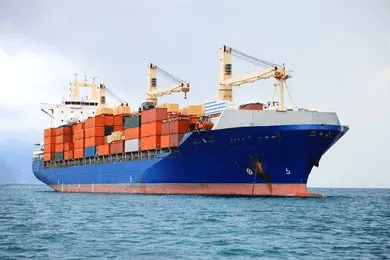

- Air Freight: Air freight involves transporting scarves via airplane. This method is often used when speed is of the essence (for example, if there’s an upcoming holiday season where the demand for scarves is high). Still, it also tends to be more expensive than other methods due to fuel costs and other factors like insurance requirements).
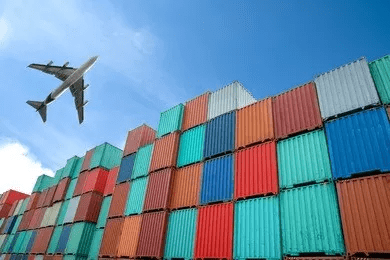

- Surface Freight: Surface freight involves transporting scarves via truck or train rather than by air or sea vessel. This method tends to be much slower than air or sea transport but also much less expensive—which makes it a great


Shipping
The cost of shipping depends on the weight and size of the product. Usually, shipment costs are calculated by weight, volume, and distance. In most cases, however, the importer pays these costs.
The following information can help you determine how much it would cost to ship scarves from China to Germany:
- International Shipping Costs: Your order shipping costs depend on where you live and where you want your scarves shipped from (the country of origin). These two factors will affect how much money you pay for shipping because they affect variables like fuel prices, which change based on supply and demand fluctuations in different parts of the world; distance traveled; size/weight of packages being shipped; scarves cleared through customs by local authorities at either endpoint—and more!


- Air shipping is generally faster than sea shipping but also more expensive. If you are in a hurry and don’t care about saving money, then air shipping is probably better for you. On the other hand, if you have plenty of time and want to save money or reduce the damage done to your scarves during transit, consider using sea transportation instead.
How long does it take to ship from China to Germany?
When it comes to shipping, the time it takes to get your scarves depends on the method you choose. Air freight is usually faster than sea freight, but other variables are also involved.
For example, shipping by air will take approximately 5-7 days for your scarves to arrive in Germany. However, if you opt for sea freight (the cheapest option), they’ll take 30-45 days to travel from China across the ocean to Europe—that’s only if everything goes according to plan!
But this isn’t always a sure thing… Delays like these can cause problems at customs and result in further delays. So we highly recommend choosing an express courier service like DHL Express or UPS instead of regular postal services like EMS (China Postal Services) or FedEx International Mail Service (FIMS).
German scarves Import Requirements from China
Importing scarves from China is a relatively simple process. First, you’ll need to ensure that you have all the necessary paperwork, including an EIN number and a completed customs declaration. The next step is to plan and know when you want your scarves delivered so they arrive just in time for the holidays or even on Black Friday!
After those steps are complete, there are some specific German import requirements for scarves from China that you’ll need to consider:
- All scarves coming into Germany must be accompanied by an invoice (sometimes called a packing list). This document should state exactly what’s being imported and how much it costs.
- Your shipping company will help determine whether any taxes or duties will be paid upon arrival of your shipment in Germany. So be sure that they’ve got everything ready before it leaves China!
Documentation Requirements for Importing scarves to Germany from China
You will need to complete the following documentation:
Customs declaration: This form is used by customs officials to verify that your products are imported legally. It must be filled out in German, so make sure you have a German-speaking employee or translator on hand. You can find a sample of this document here.
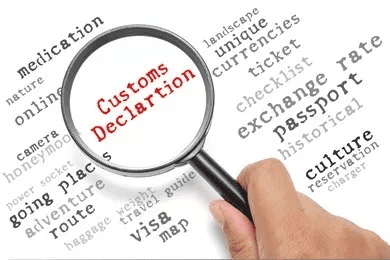

Quality certificate (if required): If your scarves contain a certain amount of natural fiber, you may be required to provide a quality certificate showing that they meet specific standards the German government sets. If this applies to your business, contact us for more information.
Packing list (if needed): If you want to ship multiple scarves in one shipment, you’ll need a packing list for each scarf. This will help ensure that each scarf arrives at its destination safely and undamaged.
Invoice: It includes details about the products that are being imported, including the quantity and the value of those products.
Certificate of origin (if required): A certificate of origin confirms that a product was manufactured in a particular country or region (for example, China). This can be helpful when determining if tariffs apply or any other regulations apply because it gives an understanding of where the scarf was made and whether or not it was made within certain trade agreements or regions that have specific requirements for their products entering foreign countries such as Germany.
The documents will be submitted to the German customs authorities, and they may ask for additional documents or information. Therefore, you should ensure that all documents are in English or German, as this is a requirement by law.
German Import Taxes and Duties
In most cases, you must pay import taxes and duties on your scarves. The import taxes will depend on the value of your scarves and how they enter Germany. If you choose to have your scarves shipped by sea, they may also fall under additional customs procedures (which can include an extra tax).
Import taxes are based on the value of your imported scarves when they arrive at their port of entry in Germany. The Customs Authority will assess this value and other factors, such as packaging and transport costs, before determining how much tax must be paid.
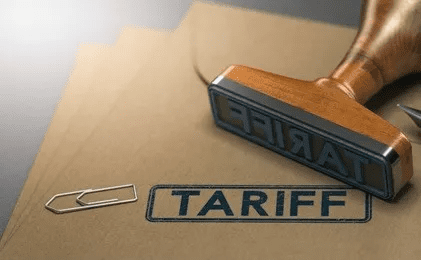

In some instances, if you qualify for a particular tariff code, you may be eligible for reduced or waived duties/taxes altogether. You must ensure that your chosen shipping method has these codes applied as soon as possible after ordering so that there aren’t any issues later down the road once shipment begins!
EU regulations
The European Union has strict regulations regarding importing goods into member countries. For example, if you are importing scarves from China to Germany, you must comply with the following rules:
- The scarves must be made with organic cotton fabric. In addition, the material must be certified by a third-party organization, and it must display a symbol that shows that it is organic.
- His scarves must not contain any animal products or byproducts whatsoever. This includes silkworms’ cocoons and silkworm waste products, as well as wool and other animal hair fibers


Tips for Keeping Down Costs and Shipping Time from China-Germany
If you want to keep your costs down and ship time to a minimum, there are several things you can do:
- Ship in bulk. If you have multiple orders of scarves, consider consolidating them into one shipping container instead of sending individual packages. You’ll save on shipping costs by reducing them, but check with the carrier about maximum weight limits before packing your scarves!
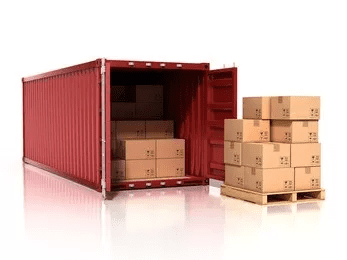

- Know how much you need before starting an order with a supplier or manufacturer. The more charges they have from other customers, the better their quality control will be over each product produced specifically for you. You also want to ensure that your order is as tiny as possible so as not to tie up too many resources at once – especially if something goes wrong along the way during production/delivery timeframes.
- Keep track of all costs associated with importing scarves into Germany (or any other country), so there are no surprises later on when it comes time to pay taxes or fees at customs inspections (if applicable). That way, everything will go smoothly! 🙂


- Ship by sea. Sea shipments take longer than air shipments (upwards of three weeks versus two days), but they are cheaper and safer for bulky items like scarves. If possible, ship via ocean freight from China-Germany instead of air freight from China-Frankfurt or other nearby airports so that customs clearance is more accessible when the package reaches its destination.
- This will also help reduce shipping times since it doesn’t need to clear customs upon arrival at an airport as it would if it were sent directly from China via air freight services such as DHL or UPS; rather than wasting time waiting at the airport for clearance documents which may never arrive due to delays in transmitting information between countries during peak periods such as the Christmas season when many exporters send out their scarves all at once without taking into account any potential delays caused by weather conditions etc., we recommend using Ocean Freight Services like NYK Line.
- The latter offer competitive rates compared with other major carriers but, more importantly, fast turnaround times for documents required for customs clearance which means less waiting around!
Importing scarves from China can be a great way to get high-quality ones at low prices. However, before embarking on such an exciting venture, you must know what you’re doing! We hope this post has been helpful for you in understanding the process and getting started on your next scarf importation adventure.


